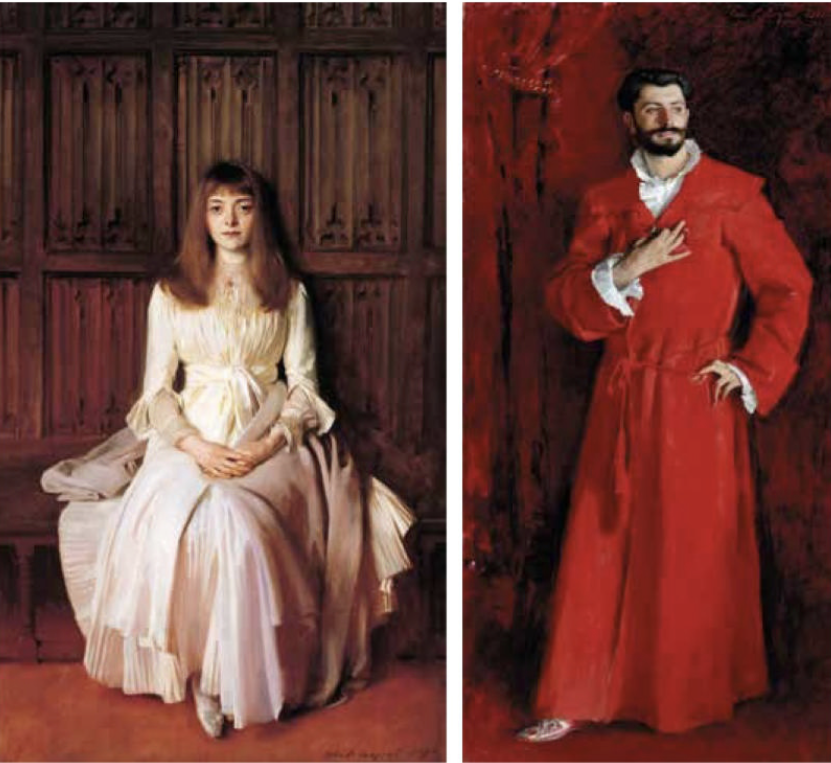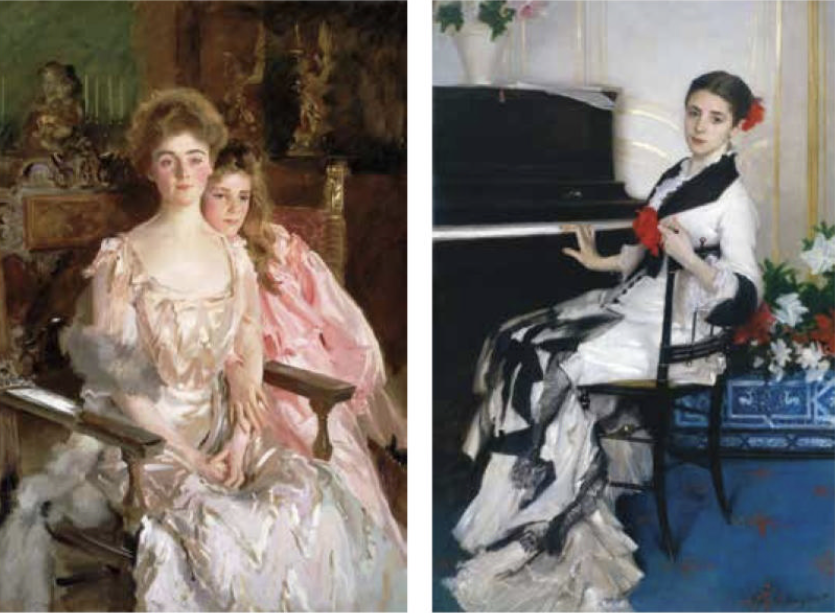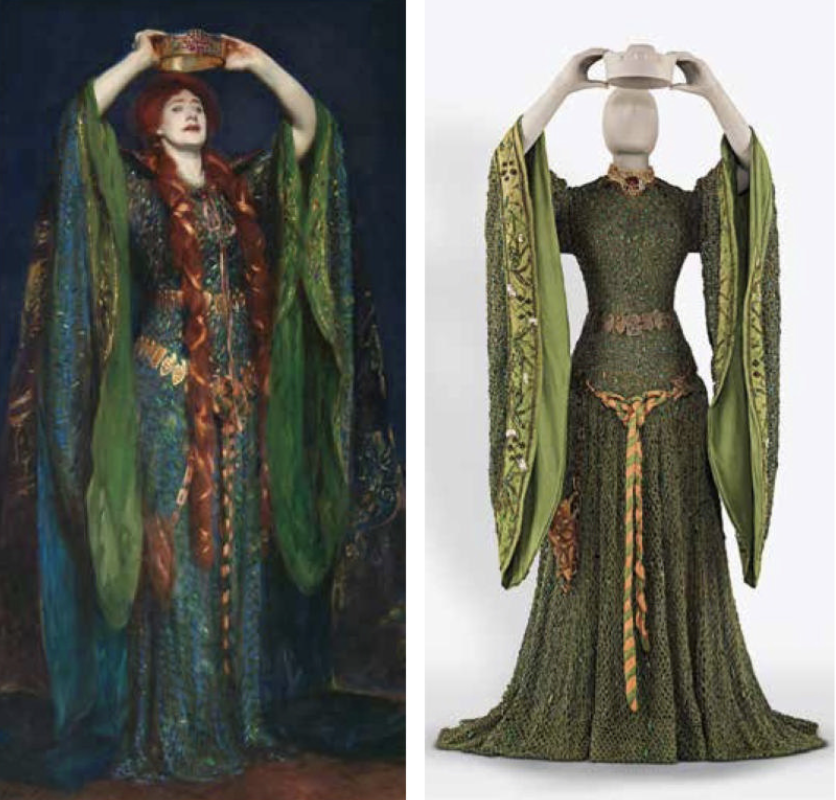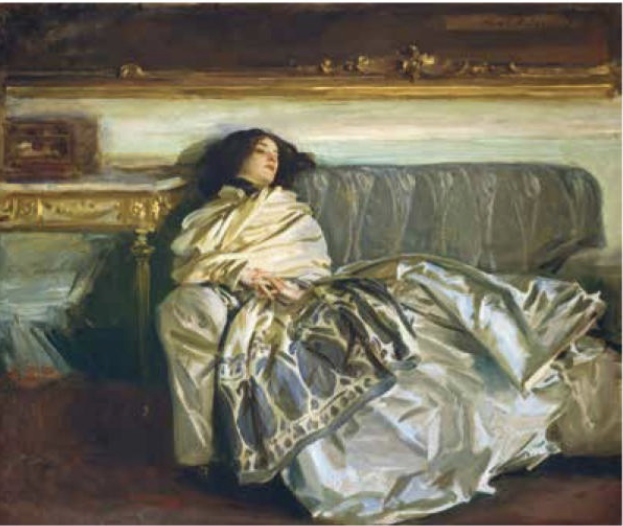Introduction
The interplay between an artist’s creative vision and the sitters’ personal preferences is a dynamic that has long fascinated art enthusiasts and scholars. In the catalogue’s preface to the exhibition “Fashioned by Sargent,” Erica E. Hirshler and James Finch delve into this intriguing dynamic. The exhibition, organized in collaboration between Tate Britain and the Museum of Fine Arts, Boston, offers an insightful exploration of John Singer Sargent’s portrait practice, spanning from his early Parisian career to his later studies of figures in natural landscapes. The focus lies on the role of attire in conveying messages, as Sargent’s artistry took precedence over mere pandering to clients. Through meticulous analysis of his choices, viewers gain insight into the liberties and artistic interpretations Sargent exercised in crafting his subjects’ likenesses.
The Curators’ Perspective
Hirshler, the Croll Senior Curator of American Paintings at the Museum of Fine Arts, Boston, and Finch, assistant curator of 19th Century British Art at Tate Britain, illuminate the pivotal questions that underpin the exhibition. Who holds the reins when an artist takes on the responsibility of rendering a portrait? What narratives emerge from the apparel selected, and how does this influence the image’s reception? These queries prompt a deep exploration of Sargent’s works, revealing a distinct tendency where the artist’s vision overshadowed the desires of his subjects. The duo underscores the significance of scrutinizing Sargent’s choices, as these unveil his unique interpretations and bold deviations from conventional sartorial norms.

Sargent’s Unconventional Approach
Throughout his illustrious career, Sargent established himself as the premier society portrait painter of his era. Born to American parents in Florence in 1856, he ascended to the zenith of society portraiture and engaged with the progressive art movements that characterized the early 20th century. Sargent’s reputation was both celebrated and critiqued, with his audacious painting “Madame X” exemplifying this duality. The portrait, intended to bolster his standing, faced more ridicule than acclaim during its debut at the Salon of 1884. Despite its initial reception, Sargent’s daring portrayal caught the admiration of Isabella Stewart Gardner, who, introduced by Henry James, commissioned her own portrait.

The Gardner Connection
Isabella Stewart Gardner’s introduction to Sargent in 1886 led to a transformative artistic relationship. Gardner’s fascination with Sargent’s provocative “Madame X” prompted her to invite the artist to capture her likeness. Sargent’s struggles to encapsulate her restless spirit resulted in a portrait characterized by raised eyebrows and daring décolletage. Jack Gardner, her husband, treasured the portrait and ensured it remained within their home, a testament to Sargent’s ability to capture his subjects’ essence. Gardner invited Sargent to her residence, where he set up a studio and crafted a series of portraits. Among them, “Mrs Fiske Warren (Gretchen Osgood) and Her Daughter Rachel” stands out, showcasing the artist’s deep connections with his subjects.
Fashion and Identity
Sargent’s intersection with fashion is vividly illustrated through his portraits. His attendance at a production of Shakespeare’s “Macbeth,” starring Ellen Terry, offered an opportunity to depict her in her everyday attire. Yet, Sargent’s persuasion led to the portrayal of Terry in resplendent beetle-wing robes that had captivated him during the performance. Detailed descriptions of the gown by costume designer Alice Comyns-Carr highlight the meticulous artistry that went into crafting these elaborate garments. Sargent’s willingness to blend fashion with artistry speaks to his commitment to capturing not just appearances but the essence of his subjects.

Transition to Intimacy
Sargent’s oeuvre evolved over time, with a shift toward intimate and informal figure studies. His niece and muse, Rose-Marie Ormond, became a central subject in his later works. The painting “Nonchaloir (Repose)” exemplifies this transition, showcasing Rose-Marie as a figure immersed in poetic contemplation. The portrait reflects Sargent’s departure from traditional formalities, opting instead to capture a languid and anonymous subject. The painting’s aura of fin-de-siècle elegance sets the stage for the impending upheavals of the early 20th century, marking the end of an era.
The Enigmatic Rose-Marie
Sargent’s intimate connection with Rose-Marie Ormond is evident not just in the paintings themselves but in the deep emotional resonance of his words. Rose-Marie’s tragic end during World War I, a victim of a German bomb that claimed her life, deeply affected Sargent. His poignant expression of loss and sorrow underscores the genuine bond he shared with his muse. The profound connection between artist and subject transcends the canvas, exemplifying the power of portraiture to encapsulate human emotions.
Conclusion
Fashioned by Sargent” transcends the realm of a mere painting exhibition; it is an immersive odyssey that navigates the intricate intersections of artistic imagination, interpersonal connections, and the ever-evolving tapestry of fashion. Within this showcase, John Singer Sargent’s unparalleled capacity to interlace garments, sentiment, and identity stands as a testament to the profound essence of portraiture as a vessel for profound comprehension. The collaborative endeavor between the Museum of Fine Arts, Boston, and Tate Britain unravels Sargent’s universe, wherein attire metamorphoses from a fabric into a channel for articulating the intricacies that define the human experience.
Sargent’s portraits cease to be mere likenesses; they metamorphose into intimate dioramas, illustrating the fusion of self-expression and the artist’s interpretation. These canvases unveil not only the sitters’ physical appearances but also their emotional landscapes. The collaboration between museums accentuates this narrative, inviting audiences to step beyond the surface and immerse themselves in Sargent’s creative journey. Attire, meticulously chosen by the artist, becomes a conduit for communicating the nuances of personalities, social contexts, and cultural currents.
In this exhibition, visitors become voyagers in the realm of attire’s language, decoding the visual poetry of garments and the stories they unfurl. Sargent’s mastery lies in his ability to manifest the intangible, to sculpt narratives from fabric, to explore the resonance between cloth and character. As viewers traverse this curated landscape, they partake in a profound exploration of Sargent’s genius—a genius that transcends brushstrokes, delves into the intricacies of human identity, and reveals the transformative power of fashion as a silent storyteller.
Feature Image: John Singer Sargent (1856–1925), Nonchaloir (Repose), 1911. Oil on canvas in National Gallery of Art, Washington, DC. Gift of Curt H. Reisinger, 1948.16.1. Courtesy: National Gallery of Art, Washington, DC.

Contributor





